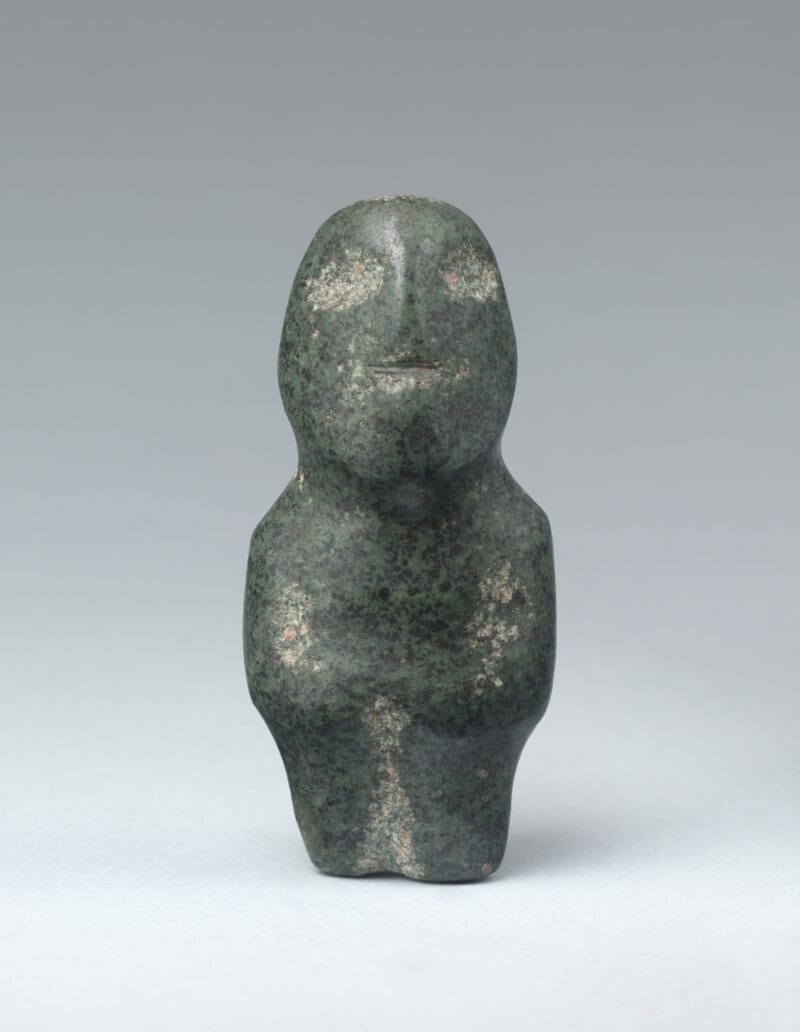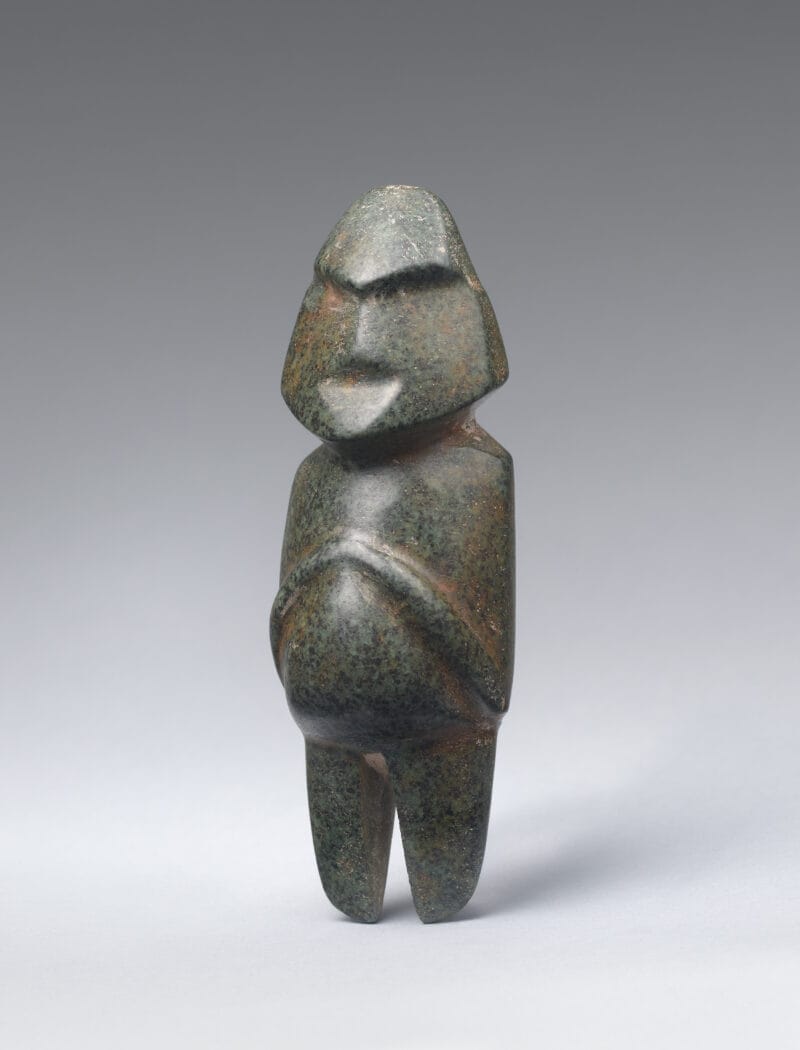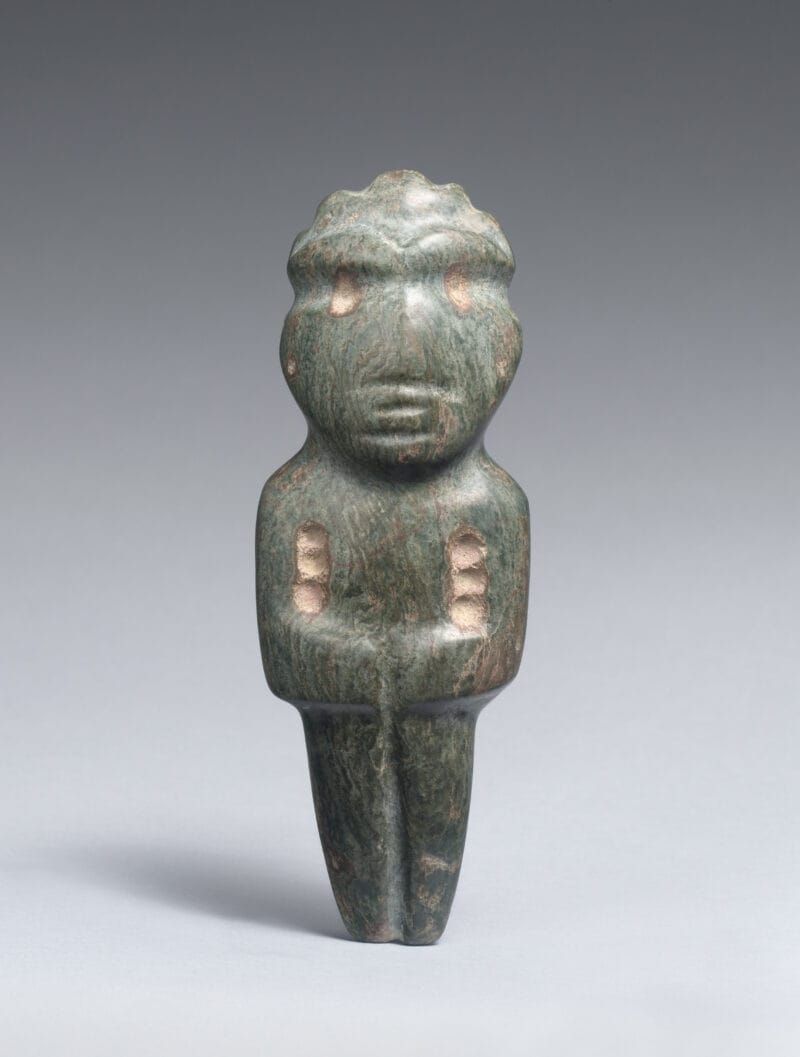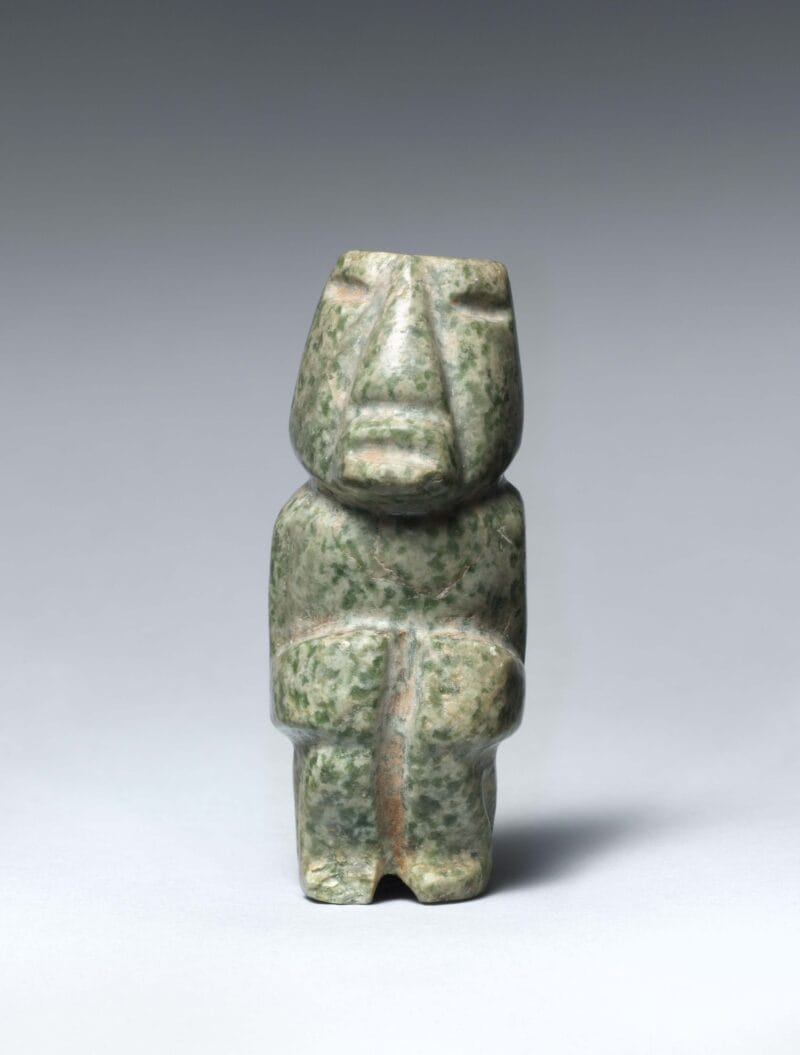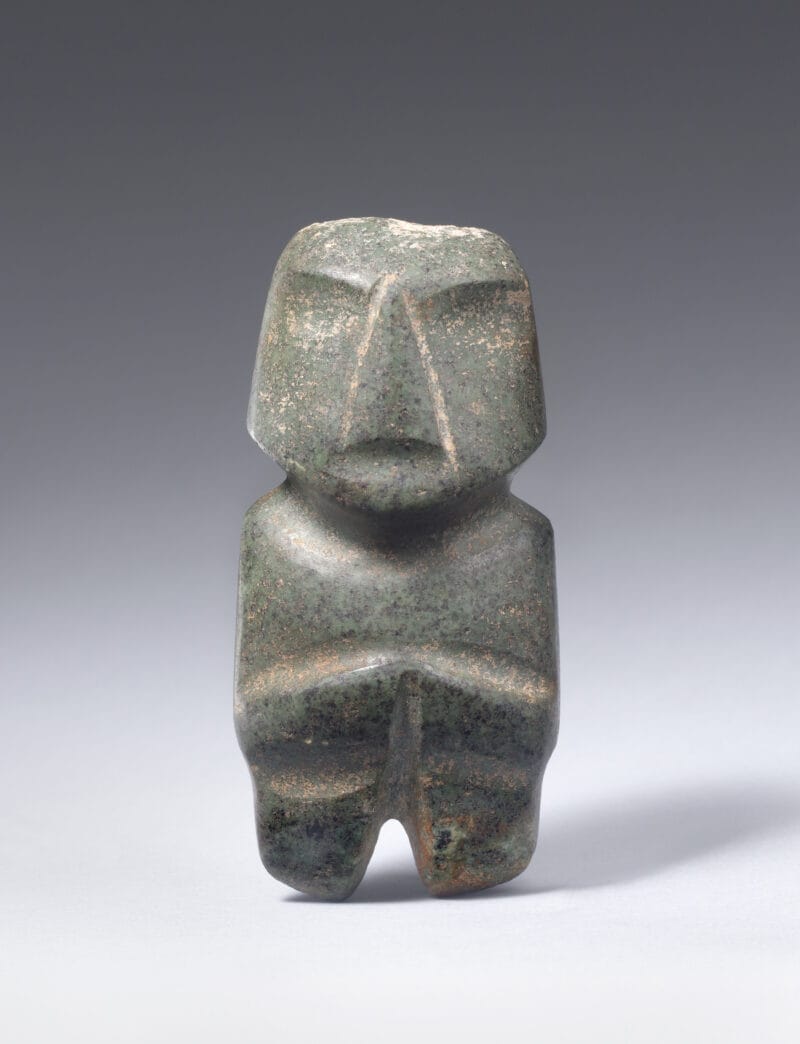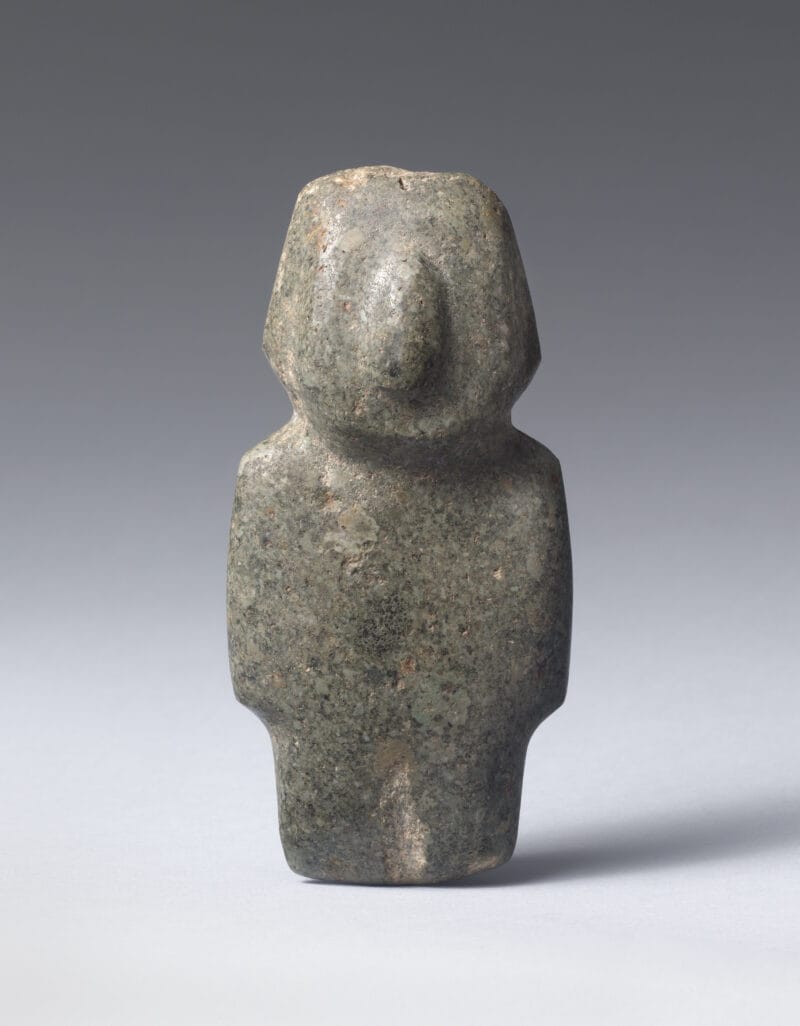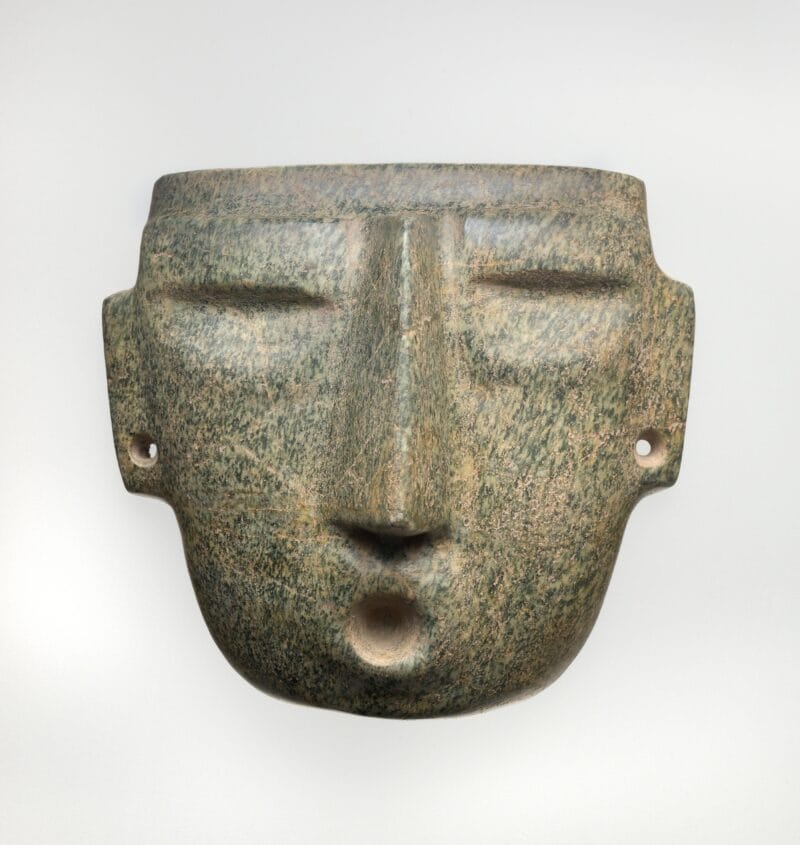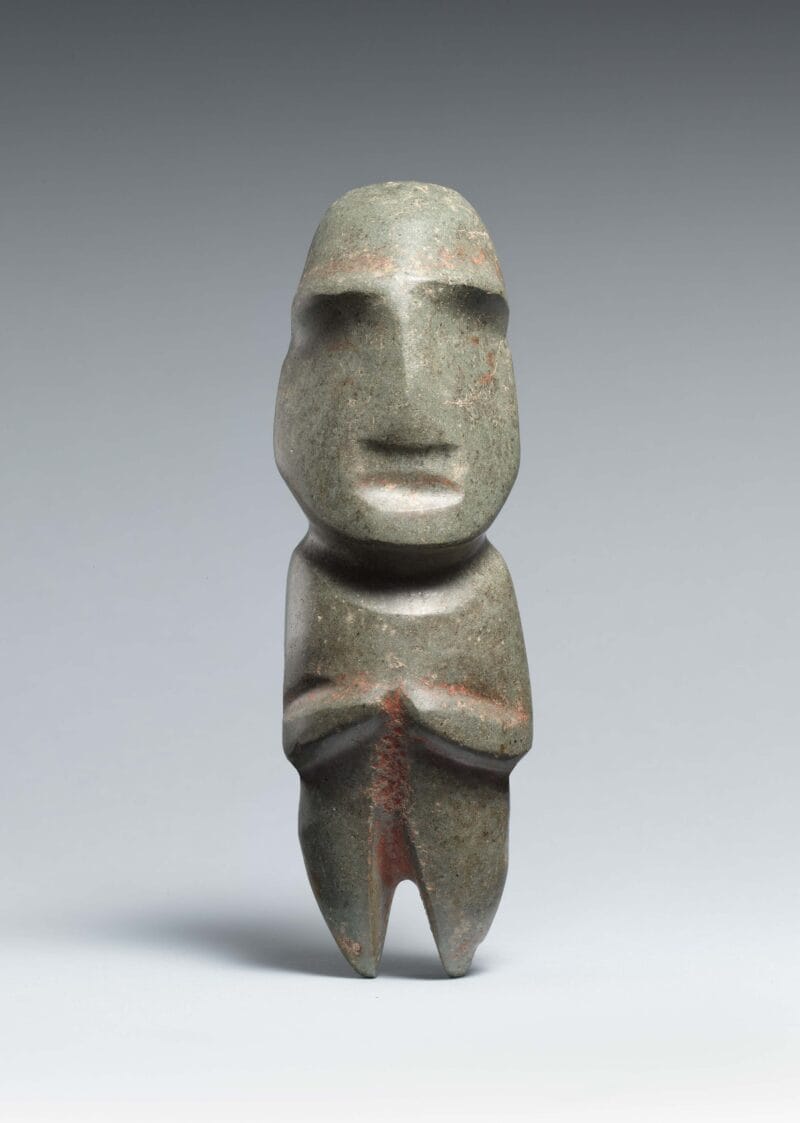
About the Object
Mezcala-Chontal figures like this one, which was created from mottled green stone, were most likely reworked from an earlier celt, or stone hand axe. It displays attributes that may date the figure’s creation to the early to middle phase of the Mezcala tradition. This influence can be seen through the representation of eyebrows, which are often bisected by a cut down the center of the brow ridge, and the placement of arms horizontally across the figure’s abdomen. The Chontal characteristics are most clearly present in the head of the figures, which are often more rounded and worked than their Mezcala counterparts. Finally, the Chontal characteristics can be seen by larger T-shaped nasal and eyebrow ridges, and shared tradition of placing the arms horizontally across the figure’s abdomen/chest.
Additional Information
Much is still unknown about Mezcala-Chontal traditions originating in what is now the Mexican state of Guerrero because of a lack of archaeological excavation and analysis. However, interest in these unique figures has been generated over the past few decades so that scholars are now piecing together more data about these traditions and their context within the broader pre-colonial Americas. For instance, the earlier features of this Mezcala-Chontal figure indicate that it was most likely associated with an elite tomb burial.
[Throckmorton Fine Art, New York, NY];
The Jan T. and Marica Vilcek Collection, 1995-2010;
Gift to The Vilcek Foundation, 2010;
Related Objects
You may also be interested in
Iman Issa

Meleko Mokgosi


